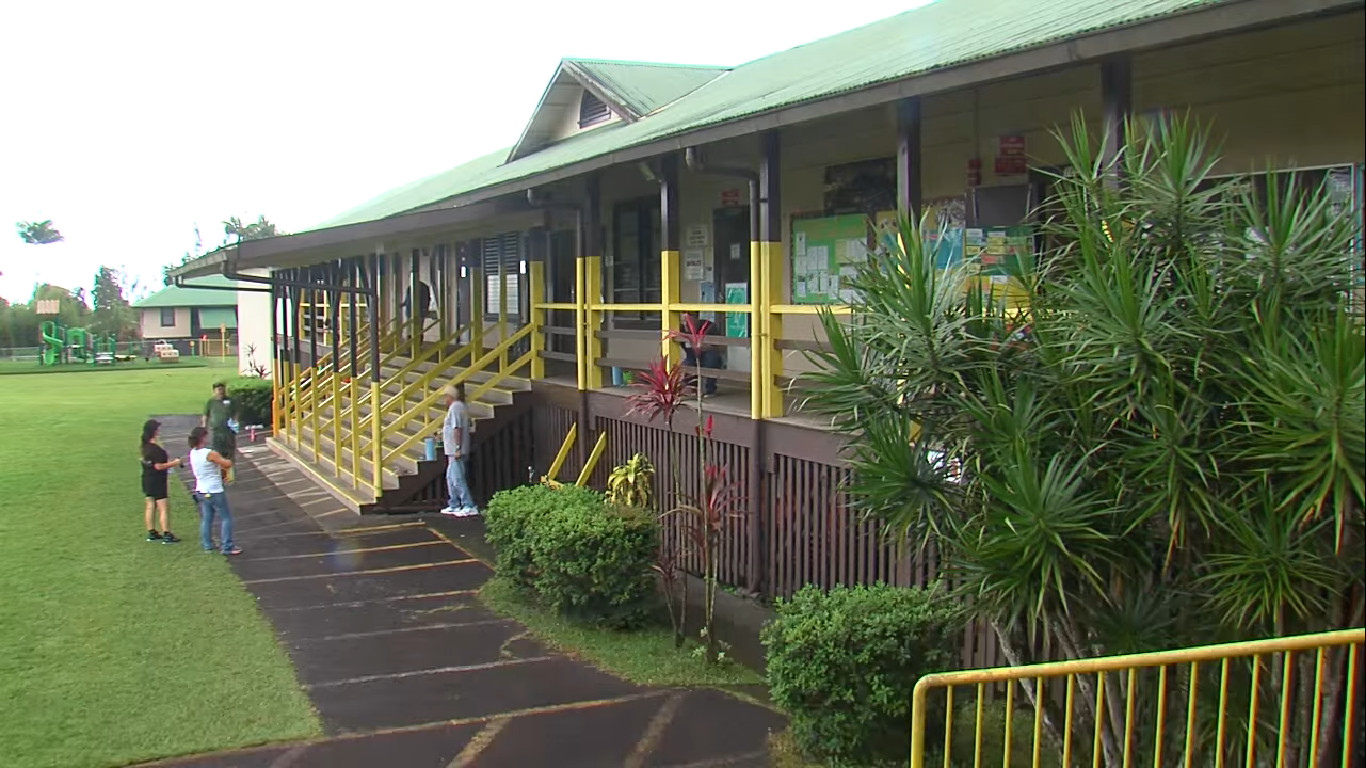(BIVN) – Arsenic, chlordane and lead are some of the contaminants found in the soil following a study of 23 schools on the east side of Hawai‘i Island.
In a Thursday media release, the Hawai‘i State Department of Education and the Hawai‘i Department of Health listed 18 “impacted” schools. They are:
- DeSilva Elementary (arsenic and lead)
- Haaheo Elementary (lead)
- Hilo High (lead)
- Hilo Intermediate (lead)
- Hilo Union Elementary (chlordane and lead)
- Kalanianaole Elementary & Intermediate (lead)
- Kapiolani Elementary (arsenic, chlordane and lead)
- Kau High & Pahala Elementary (chlordane and lead)
- Kaumana Elementary (lead)
- Keaau Middle (arsenic and lead)
- Keaukaha Elementary (lead)
- Laupahoehoe High & Elementary (lead)
- Mountain View Elementary (lead)
- Naalehu Elementary & Intermediate (lead)
- Pahoa Elementary (chlordane and lead)
- Pahoa High & Intermediate (arsenic, chlordane and lead)
- Waiakea Intermediate (arsenic)
- Waiakeawaena Elementary (chlordane and lead)
The review was initiated in 2017, the state says, “primarily to evaluate the presence of arsenic in soil due to historic use of arsenic-based herbicides when the land was utilized for sugar cane cultivation prior to schools being built. Assessment of lead and organochlorine pesticides, such as chlordane, were included in the study due to known historic uses of both lead paint and termite treatments.”
“The issue of lead, arsenic and organochlorine pesticide contamination is not unique to schools and could persist around any older home or building,” said Health Director Bruce Anderson. “We need to be vigilant and understand how to protect ourselves and our children from these chemicals. We are sharing this information out of an abundance of caution and want to reassure the public that exposure to lead, arsenic and organochlorine pesticides is preventable.”
According to the media release:
HIDOE worked with DOH to create school-specific plans to minimize lead exposure to students and staff. Areas found to have the highest soil contamination were immediately addressed with containment measures, and mitigation efforts are continuing at some campuses. Containment measures have included the removal and proper disposal of impacted soil; planting of clean soil, ground cover or pavers; and restricted access to affected areas.
“The safety and well-being of our students and staff is a high priority and work is already underway to minimize potential health risks,” said Superintendent Dr. Christina Kishimoto. “With many of our communities sited on former sugar or other agricultural lands, the potential for soil issues can be fairly high, and we continue to work diligently with the Health Department to implement mitigation measures at each of our impacted schools.”
Exposure to lead, chlordane and arsenic is preventable. Helpful tips include:
- Children should avoid playing in the soil right next to buildings.
- Good handwashing, especially prior to meals, will decrease the risk of unintentional ingestion and exposure.
- Wash all fresh produce thoroughly under clean, running water.
- Keep homes free of dirt and dust by leaving shoes outside and keeping areas clean.
The news release added:
Parents concerned about exposures may contact the 24-7 Hawai‘i Poison Center Hotline at (800) 222-1222 or consult with their child’s doctor. The Poison Center is staffed with trained pharmacists, nurses, and medical toxicologists to answer questions. More information and resources are also available on DOH’s Childhood Lead Poisoning Prevention Program website at http://lead.hawaii.gov and DOH’s Hazard Evaluation and Emergency Response Office website at http://hawaii.gov/doh.heer.
For more information, click here for a DOH fact sheet that goes over what you need to know about lead, arsenic and organochlorine pesticides (OCPs) in soils at schools in Hawaii.


by Big Island Video News8:46 am
on at
STORY SUMMARY
HAWAIʻI ISLAND - State agencies say they are working to resolve soil contamination issues and build awareness to prevent exposure.